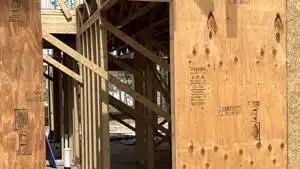News from the South - Alabama News Feed
State public health departments fear looming federal cuts in Trump’s next budget
by Shalina Chatlani, Alabama Reflector
July 28, 2025
This story originally appeared on Stateline.
Between 2016 and 2022, as congenital syphilis cases rose nationally and especially in the South, Mississippi saw a one thousand percent increase — from 10 to 110 — in the number of newborn babies who were hospitalized after contracting the disease, known to cause developmental issues, intellectual disabilities, and even death.
So in 2023, the state Department of Health mandated that all medical practitioners screen for the disease in pregnant mothers, and it has been running advertisements to spread awareness.
Annual congenital syphilis cases in Mississippi rose from 62 in 2021 to 132 in 2023, according to state data. The number fell to 114 last year. There have been 33 cases so far this year.
GET THE MORNING HEADLINES.
That work won’t stop despite potential budget cuts, Dr. Daniel Edney, Mississippi’s state health officer, said in an interview. “We’re going to keep doing what we have to do, you know, to keep it under control.”
State by state, public health departments take a similar approach: They monitor, treat and try to stem preventable diseases, alongside their host of other duties. But in the coming year, health department officials — with their agencies already strapped for cash — fear they’ll find it much more difficult to do their jobs.
President Donald Trump’s budget proposal for fiscal year 2026 would cut the federal Centers for Disease Control and Prevention budget by more than half, from $9.3 billion to $4.2 billion. The proposal serves as a wish list from the administration, a blueprint for the Republican-controlled Congress as it works through upcoming spending legislation.
If lawmakers hew to Trump’s vision, then state and county public health departments would be hit hard. States contribute to their own health departments, but a lot of them rely heavily on federal funding.
And around half of local public health department funding comes from federal sources, primarily the CDC, as noted in a 2022 report from the National Association of County & City Health Officials.
“The federal government provides a lot of funding, but the actual implementation of public health programs happens at the state and local level,” said Josh Michaud, associate director of global health policy at KFF, a health policy research group. “Each state has its own approach, in many ways, to how public health programs are overseen, how they’re funded, how they are implemented.”
In announcing his department’s share of the proposed budget, U.S. Health and Human Services Secretary Robert F. Kennedy Jr. said Trump’s goals align with “new priorities in reversing the chronic disease epidemic.”
But many local health leaders point to the longtime mission of state public health departments in preventing the spread of disease.
“Local public health is on the front lines preventing communicable disease, operating programs to prevent chronic disease, ensuring our septic and well water systems are safe,” said Dr. Kelly Kimple, acting director of North Carolina’s Division of Public Health within the Department of Health and Human Services.
“I’m very concerned,” Kimple said, “especially given the magnitude of funding that we’re talking about, as we can’t keep doing more with less.”
Clawing back COVID-era grants
Other federal budget cuts also have states worried.
Many state public health departments grew alarmed when the Trump administration announced in March that it would be clawing back $11.4 billion in COVID-era funding for grants that were slated to extend into 2026.
Twenty-three states and the District of Columbia sued. A federal district court in Rhode Island temporarily blocked the cuts, and the case remains tied up in court.
The court’s preliminary injunction may not protect temporary staff or contractors, though. Public health departments have been laying off staff, cutting lab capacity and reducing immunization clinics, said Dr. Susan Kansagra, chief medical officer for the Association of State and Territorial Health Officials.
Historically, public health departments receive funding in “boom and bust” cycles, meaning they tend to get more federal support during emergencies, said Michaud, of KFF. But “since the Great Recession of 2008, there was a general decline in public health support funding until the COVID pandemic.”
For example, KHN and The Associated Press reported that between 2010 and 2019, spending on state public health departments declined by 16% per capita and spending for local health departments fell by 18%.
Nationally, syphilis cases reached historic lows in the 2000s, thanks to robust prevention efforts and education from public health officials. By 2022, however, cases reached their highest numbers nationally since the 1950s.
“In the wake of the COVID emergency, you’ve seen a sort of backlash to what people had been calling the overreach of public health and imposing vaccination requirements and lockdowns and other public health measures,” Michaud told Stateline.
Smallpox, cholera and typhoid
Public health departments and officials go back to the 19th century, when there was a greater emphasis on sanitation efforts to prevent spread of diseases such as smallpox, cholera and typhoid, which were rampant at the time.
By the end of the century, 40 states had established health departments, which to this day are responsible for water sanitation, tracking the spread of disease, administering vaccinations, furnishing health education, providing screenings for infants and some prenatal care for moms at local clinics, offering family planning services, and tracking and treating sexually transmitted infections, among other things.
What we’re seeing now is a complete upheaval of the funding going into public health.
– Josh Michaud, associate director of global health policy at KFF
Kimple pointed to measles as a current example of a disease that’s spreading fast. When North Carolina’s health department detected a case in the state, she said, the department “identified and contacted everyone who might have been exposed, helped people get tested, worked with doctors to make sure they knew how to respond.”
That’s the legacy of local public health, Michaud said.
“The federal government cannot decide, ‘This public health program will happen in this state, but not that state,’ that kind of thing. And cannot declare a national lockdown. The COVID pandemic tested a lot of those boundaries. It really is a state and local responsibility to protect public health. And that’s always been the case, since the beginning of our country,” Michaud said.
“And what we’re seeing now is a complete upheaval of the funding going into public health.”
A major cut in services
Kimple said she’s seen recent progress in her state in the support for funding public health.
“North Carolinians viewed our work as highly important to improving health and well-being in the state, and appreciated the local presence, the reliable information, the role in prevention and efforts to protect, in particular, vulnerable communities,” she said.
Similarly, Edney said that Mississippi state lawmakers were showing more support, despite some setbacks in 2016 and 2017. New federal cuts could throw a wrench in the health department’s economic plans and its ability to reach small communities.
“Now the federal rug is being pulled out from under us,” he said.
Edney said he expects the federal share of his department’s public health funding to fall from its current 65% to around 50%.
Edney said he’s been trying to strengthen Mississippi health department’s longevity by diversifying its revenue streams by, for example, accepting private donations.
The state will not stop doing its “core” work, he said, regardless of federal funding.
“We’re not going to cut back on services at the county health department, because what we do now is all mission critical,” Edney said.
Stateline reporter Shalina Chatlani can be reached at schatlani@stateline.org.
Stateline is part of States Newsroom, a nonprofit news network supported by grants and a coalition of donors as a 501c(3) public charity. Stateline maintains editorial independence. Contact Editor Scott S. Greenberger for questions: info@stateline.org.
Alabama Reflector is part of States Newsroom, a nonprofit news network supported by grants and a coalition of donors as a 501c(3) public charity. Alabama Reflector maintains editorial independence. Contact Editor Brian Lyman for questions: info@alabamareflector.com.
The post State public health departments fear looming federal cuts in Trump’s next budget appeared first on alabamareflector.com
Note: The following A.I. based commentary is not part of the original article, reproduced above, but is offered in the hopes that it will promote greater media literacy and critical thinking, by making any potential bias more visible to the reader –Staff Editor.
Political Bias Rating: Center-Left
This article presents a fact-based examination of public health funding cuts proposed under the Trump administration’s budget, focusing on the impact to state and local health departments. While it maintains a largely neutral tone, the emphasis on potential negative consequences for public health programs and the inclusion of critical perspectives on the funding reductions align the coverage more with a center-left viewpoint. The language underscores concerns about underfunding and the importance of public health infrastructure, typical of coverage attentive to social welfare issues without overt ideological framing.
News from the South - Alabama News Feed
Huntsville Fire & Rescue Holds 9/11 Memorial Service | Sept. 11, 2025 | News 19 at 5 p.m.
SUMMARY: On September 11, 2025, Huntsville Fire & Rescue held a memorial service to honor the nearly 3,000 lives lost in the 9/11 terrorist attacks. Military members and first responders gathered at Huntsville Fire Station One, where at 7:46 a.m., lights, sirens, and air horns sounded to replicate the sounds heard during the attacks. Fire Chief Howard McFarland emphasized the importance of remembering the tragedy to educate younger generations and prevent history from repeating. Former Captain Lynn recalled the shock of witnessing the attacks and noted how 9/11 reshaped emergency preparedness. This annual event is held across all 20 Huntsville fire stations.
The Huntsville Fire & Rescue held a 9/11 memorial service.
News 19 is North Alabama’s News Leader! We are the CBS affiliate in North Alabama and the Tennessee Valley since November 28, 1963.
https://whnt.com/
https://www.facebook.com/whntnews19
https://www.instagram.com/whntnews19/
https://twitter.com/whnt
News from the South - Alabama News Feed
News 5 NOW at 8:00am | September 11, 2025
SUMMARY: On September 11, 2025, News 5 NOW covered 9/11 commemorations, including first responders climbing 2,000 steps at Hancock Whitney Stadium to honor the World Trade Center’s 110 stories. The Original Oyster House offered free meals to first responders in Mobile and Baldwin counties. The program also reported a new Vibrio bacterial infection case in Escambia County, highlighting health warnings for beachgoers. Additionally, they discussed a study linking chronic insomnia to increased dementia risk, election recounts in Gulf Shores, and a recent political shooting in Utah, sparking debate over harsher punishments for political violence. Viewer opinions on extraterrestrials and political violence were shared in an interactive social media segment.
First Responders in Mobile honored the heroes of September 11th, a Pensacola woman is in the hospital after being infected with the flesh eating bacteria vibrio vulnificus, and a vote re-count wrapped up in Gulf Shores…
News from the South - Alabama News Feed
Zaxby's Player of the Week: Dylan Jackson, Vigor WR
SUMMARY: Dylan Jackson, senior wide receiver for the Vigor Wolves, was named Zaxby’s Player of the Week after leading his team to a dominant region win with over 200 yards and two touchdowns. The Wolves, ranked number one in 5A, emphasize getting the ball to their best players, a strategy credited to Coach Mick S. Jackson’s ability to read defenses and execute plays with quarterback Sammy has been crucial. The team’s hard offseason training, especially in passing, is paying off. Their goals remain to beat Blunt, win the region, and compete for the state championship, treating each game like a playoff.
Zaxby’s Player of the Week: Dylan Jackson, Vigor WR
-
News from the South - North Carolina News Feed7 days ago
Reagan era credit pumps billions into North Carolina housing | North Carolina
-
News from the South - Alabama News Feed7 days ago
Amid opposition to Blount County medical waste facility, a mysterious Facebook page weighs in
-
News from the South - South Carolina News Feed7 days ago
South Carolina’s Tess Ferm Wins Miss America’s Teen 2026
-
News from the South - Kentucky News Feed7 days ago
3 states push to put the Ten Commandments back in school – banking on new guidance at the Supreme Court
-
Local News7 days ago
Duke University pilot project examining pros and cons of using artificial intelligence in college
-
News from the South - West Virginia News Feed6 days ago
Protesters in D.C. flood the streets demanding an end to Trump’s military deployment
-
News from the South - Virginia News Feed6 days ago
On the record: Winsome Earle-Sears
-
Mississippi News Video6 days ago
Interview: Come see Baptist at WTVA Senior Health Fair












































